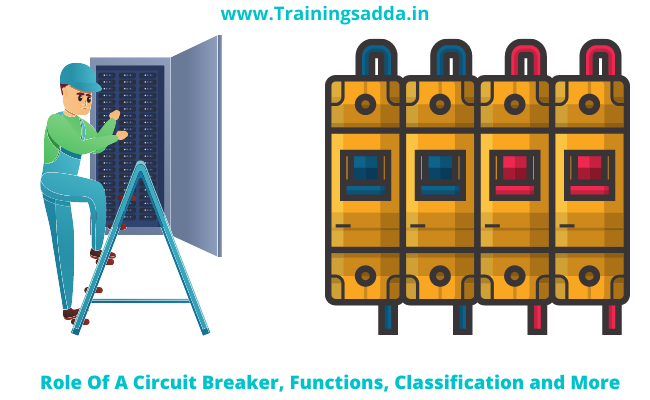Role Of A Circuit Breaker, Functions, Classification, and More

Last Updated on January 8, 2022 by admin
Table of Contents
Role of a circuit breakers:
Source: Freepik
It is imperative to have access to electricity in order to keep up and operate within a modern business or industrial enterprise or even to do basic household tasks on a daily basis. The fact remains that electricity is inherently very volatile, and thus it needs to be carefully controlled and planned for, and potential risks minimized.
Circuit breakers are devices that automatically break an electrical circuit, protecting equipment and personnel from harm. Liyond is the best circuit breaker manufacturer that gives priority to customer satisfaction and security. They also have the best quality switchgear and vacuum contactors.
An overload, a short circuit, or an earth fault can damage a system. Various sizes of circuit breakers are available, from small ones that carry only a few milliamperes, like those found in a typical house, to those that carry a few tens of thousands of amps continuously.
Know more: Important Tips When finding a Good Cable Manufacturer Online
Functions of a Circuit Breaker
A circuit breaker is a device that protects a circuit automatically. A breaker box is installed in the electrical panel, with a breaker for each circuit. Read the following points to know the main functions of a circuit breaker.
- Circuit breakers monitor electrical circuits so that in the event of a complication, such as an overload, they shut down the circuit immediately. In colloquial terms, this is called “tripping a breaker” and occurs when some equipment or appliances malfunction or too many high-current draw devices are plugged into the same circuit.
- Think of how many appliances can be connected to an electric outlet, such as a vacuum, a television, and a heater. If this were to happen, the circuit breaker almost certainly would trip, making access and use of that circuit impossible until the problem was fixed and the breaker repositioned.
- Branched circuits are protected against overload, short circuits, and ground faults by circuit breakers.
- Circuit breakers can be opened and locked open to open circuits safely for emergency repair, troubleshooting, and isolating branch circuits and electrical devices.
- Breakers are typically marked with the amperage rating on their handles or switches. They may also display the following information:
- The compressors or other devices that require a sudden surge in amperage have the HACR rating (Heating, Air Conditioning, Refrigeration).
- Switch (SWD) – A device that opens or isolates branch circuits.
- AIC rating (Ampere Interrupting Capacity) – Could be as high as 10,000 amps short circuit rating.
- Torque is required when a conductor terminates in a mechanical lug (wiring binding).
Source: Freepik.com
Read more: Benefits of Having a Professional Industrial Valve Manufacturer
Classification of Circuit Breakers
Circuit breakers can be classified in several ways. The following criteria are frequently used to classify circuit breakers:
- Intended Voltage Applications
- Location of the installation
- Design Characteristics
- Arc Extinction
Circuit breakers are classified in several ways, but the classification according to medium and method of current interruption is the most general and significant in the industry. The main classification will be discussed in the later sections (i.e. based on arc extinction method) and for now, we will briefly discuss others:
1. Based on Voltage Class
A circuit breaker is classified logically according to the voltage at which it is intended to operate. There are two kinds of circuit breakers, according to their voltage level-
- Designed to be used at voltages up to 1000V, Low Voltage Circuit Breakers are the deal breaker for such applications.
- A high-voltage circuit breaker is designed to work at voltages over 1000V. Further, high-voltage circuit breakers are categorized as either operating at 123 kV or above and at 72.5 kV or below.
2. Based on Type of Installation
Circuit breakers can be classified based on where they will be installed, such as indoors or outdoors. This type of circuit breaker is generally high voltage. They are usually enclosed in metal switchgear enclosures, which are designed for use inside buildings or special weather-proof enclosures.
Circuit breakers can be used indoors or outdoors, and the main difference is the packaging and enclosure. The internal structures like the parts carrying current, the interrupting mechanisms, and the operation are the same no matter where they are used.
Know more: How To Repair Gate Valve In Pipeline Slabs?
3. Based on Type of External Design
In addition to being classified according to the physical design of circuit breakers, they are also typically classified according to two criteria that are:
- Dead Tank type circuit breaker– A dead tank circuit breaker has a switching device with a ground potential enclosed in an insulating medium and surrounded by interrupters.
- Live Tank Type Circuit Breaker– During the operation of a Live Tank Type Circuit Breaker, the vessel holding the interruptions and insulating medium stands above ground level.
A Dead Tank Circuit Breaker is more commonly found in the US, while a Live Tank Circuit Breaker is more commonly found in Europe and Asia.
4. Based on Type of Interrupting Medium
Circuit breakers are classified mainly using interrupting mediums and arc extinction models. A current interrupting medium and an arc extinction method have become the two most important factors for designing circuit breakers, and they also dictated the overall design parameters. Since their introduction, oil and air have been used as interrupting mediums, and are still used in some forms today.
A newer technique involves vacuum, while another one uses sulfur hexafluoride (SF6) as the interrupting medium. Circuit breakers are dominated by these two types, although oil and air circuit breakers remain in use as well.
Circuit Breakers Vs. Fuses
A circuit breaker is a mechanical switch that opens when an electrical fault occurs. Modern electrical systems have largely replaced fuses with circuit breakers. A fuse interrupts the flow of electricity by melting a metal strip when excess power or heat is applied. One problem with fuses is that they’re only good for one use. When the problem has been resolved, a circuit breaker can be turned back on as part of troubleshooting.
See more: Wireless Fire Detection And Alarm System For your Business
How does circuit breakers work?
An electromagnet generates a current when electricity is applied to a circuit breaker. Electromagnets are powerful enough to pull down levers that are connected to either spring or another electromagnet. The bar snaps down when the electrical flow exceeds the design tolerances, therefore cutting off the flow of electricity.
Conclusion:
We hope, through this article, you have got a clear idea about the role of circuit breakers in the security of homes and official buildings. Circuit breakers are crucial to prevent your electrical appliances from electrical damage and also save you from any life-threatening hazard.
Comments
0 comments




